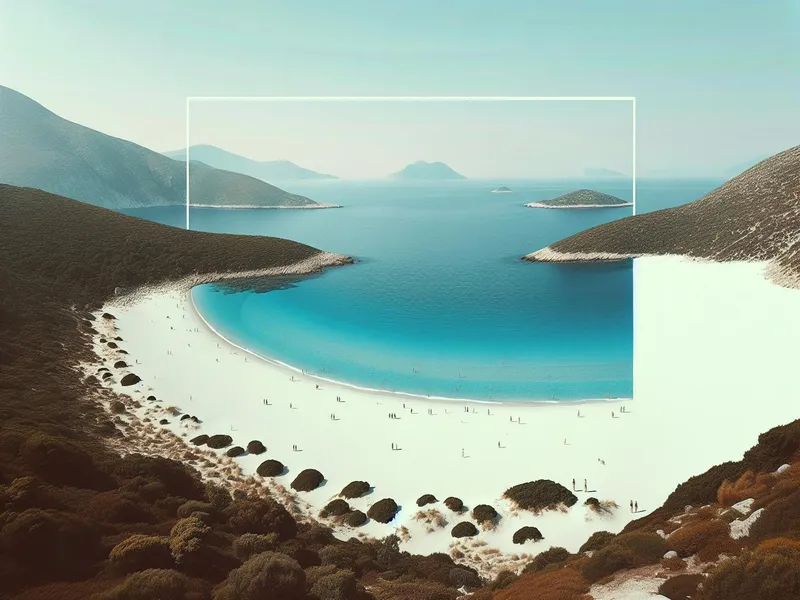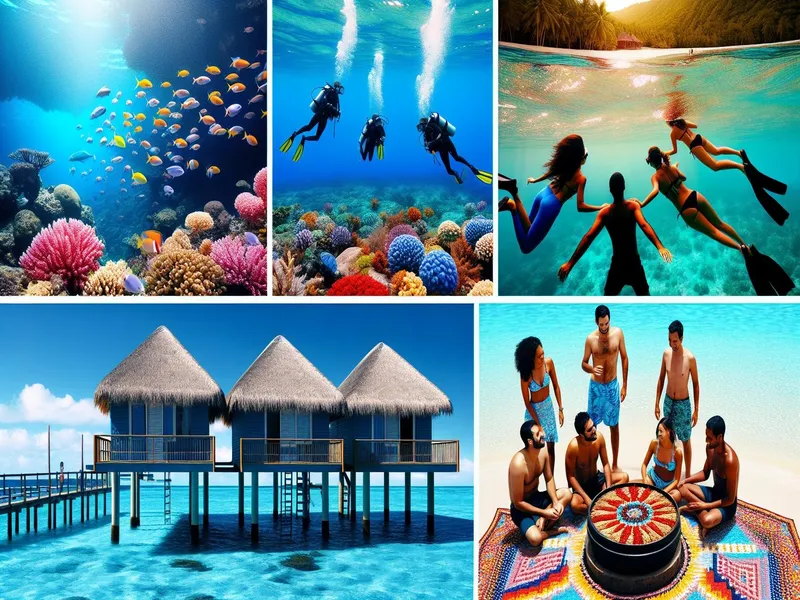
Whether you’re planning a relaxing getaway or an adventurous escape, this tropical paradise has something for everyone.
But let’s face it, not knowing where to go can turn your dream vacation into a logistical nightmare. Missing out on hidden gems or ending up at overcrowded spots can really dampen your spirits. You deserve a beach holiday that’s both memorable and hassle-free.
I’ve spent years exploring Oceania’s stunning beaches and have uncovered the best spots for every type of traveler. From secluded coves to bustling beachfronts, my insights will help you make informed decisions and avoid common pitfalls.
Whether you’re a solo adventurer, a couple seeking romance, or a family looking for fun activities, there’s a perfect beach waiting for you. Check out our travel activities guide to get started on planning your ultimate beach trip in Oceania.
I understand how overwhelming it can be to plan the perfect beach vacation. Trust me; I’ve been there too. Let me guide you through the process with expert tips and genuine recommendations so you can enjoy every moment of your trip.
Top Beaches in Oceania
When it comes to beach travel, Oceania boasts some of the world’s most stunning shorelines. Let me take you through a few gems that you absolutely can’t miss.
Whitehaven Beach, Australia
Whitehaven Beach is like stepping into a postcard. Located on Whitsunday Island, it’s famous for its pure silica sand which feels like walking on powdered sugar. I remember my first visit; the sand was so white and fine that it felt surreal. Swimming here is another level of bliss because the waters are crystal clear, giving you a perfect view of marine life below.
- Getting There: By boat or seaplane from Airlie Beach
- Best Time to Visit: May to October (dry season)
Lalomanu Beach, Samoa
Lalomanu Beach offers a slice of paradise with its vibrant coral reefs and soft sands. Situated on Upolu Island’s south coast, this beach is ideal if you’re looking to snorkel or dive. Once, I spent an entire afternoon exploring the reefs and was mesmerized by the colorful fish and corals. If sunsets are your thing, you’ll love how the sky turns into shades of orange and pink.
- Accommodation: Beachside fales (traditional Samoan huts)
- Local Tip: Try fresh coconut water sold by local vendors
Matira Beach, Bora Bora
Matira Beach in Bora Bora is often called one of the best beaches globally—and for good reason! This mile-long stretch features calm turquoise waters perfect for swimming and lounging. On my last trip there, I couldn’t resist taking dozens of photos because every angle looked Instagram-worthy.
- Activities: Snorkeling near coral gardens
- Dining: Don’t miss out on eating at beachfront restaurants serving fresh seafood
Best Time To Visit

Planning a beach trip to Oceania? Timing can make or break your vacation. Let me break it down for you.
Weather Patterns
Oceania’s climate varies, so it’s smart to know what you’re getting into. Generally, the region enjoys tropical and subtropical weather. Summers (December to February) can be hot and humid, while winters (June to August) are cooler and drier. For instance, Australia’s Great Barrier Reef is best visited from May to October when the weather is pleasant, and there’s less chance of rain disrupting your plans. In contrast, Fiji shines brightest from late March to early December with its mild temperatures and clear skies.
| Season | Months | Description |
|---|---|---|
| Summer | December-February | Hot, humid; occasional rain |
| Winter | June-August | Cooler, drier; ideal for outdoor activities |
Tourist Seasons
Crowds can seriously impact your beach experience. Peak tourist season in Oceania usually aligns with school holidays and major festivals—think Christmas in Australia or New Year celebrations in Fiji. During these times, expect higher prices and packed beaches.
If you prefer a quieter vibe, consider the shoulder seasons: April-May or September-October. These months often offer good weather without the swarm of tourists. I once visited Lalomanu Beach in Samoa during October—it was peaceful, accommodations were affordable, and I practically had the beach to myself!
Summary Table
Here’s a quick rundown:
| Type | Best Months |
|---|---|
| Ideal Weather | May-October |
| Fewer Crowds | April-May/Sept-Oct |
Activities and Attractions

Oceania’s beaches are more than just sun and sand. They offer a range of activities that can turn your beach holiday into an unforgettable adventure.
Snorkeling and Diving
Snorkeling and diving in Oceania are like stepping into another world. Picture yourself floating above vibrant coral reefs, teeming with colorful fish at places like the Great Barrier Reef in Australia or New Zealand’s Poor Knights Islands. If you’re a beginner, many spots offer guided tours to help you explore safely.
- Great Barrier Reef, Australia: Dive among 1,500 species of fish.
- Rarotonga, Cook Islands: Snorkel in clear lagoons.
- Poor Knights Islands, New Zealand: Discover underwater arches and caves.
You don’t need to be an expert to enjoy these underwater wonders. Many locations provide gear rentals and beginner lessons so you can dive right in—pun intended!
Beachfront Accommodations
Imagine waking up to the sound of waves crashing on the shore. In Oceania, beachfront accommodations range from luxury resorts to cozy beach huts.
- Fiji’s Overwater Bungalows: Stay right over the water.
- Australia’s Eco-lodges: Enjoy sustainable luxury.
- Samoa’s Fales: Experience traditional open-air living.
For example, I once stayed in an eco-lodge on Fraser Island in Australia. It was a perfect blend of comfort and nature—like camping but without giving up my bed!
Cultural Experiences
Beach travel in Oceania isn’t just about natural beauty; it’s also rich in cultural experiences. Imagine learning traditional dances or participating in local festivals.
- Hawaiian Luaus: Enjoy food, dance, and music.
- Maori Hangi Feasts (New Zealand): Taste food cooked underground.
- Pacific Island Festivals: Immerse yourself in local traditions.
I remember attending a Maori Hangi feast where I not only tasted incredible food but also learned about their customs firsthand. These experiences make your trip more meaningful and memorable.
So pack your bags! Whether you’re diving into crystal-clear waters or soaking up local culture, Oceania’s beaches promise more than just relaxation—they offer adventure and discovery too.
Tips for Travelers
Planning a beach trip to Oceania? I’ve got you covered with some handy tips that’ll make your vacation smooth and enjoyable. Let’s jump into what you need to pack and how to stay safe while soaking up the sun.
Packing Essentials
When packing for Oceania’s beaches, less is more—but some items are non-negotiable:
- Sunscreen: The Aussie sun can be brutal. I recommend SPF 50+; trust me, your skin will thank you.
- Swimwear: Bring a couple of swimsuits so you’re never stuck with a wet one.
- Flip-flops: Essential for sandy strolls and rocky shores alike.
- Reusable Water Bottle: Staying hydrated is key, especially in tropical climates.
- Waterproof Phone Case: Capture all those Instagram-worthy moments without worry.
You don’t want to lug around unnecessary stuff. Think light yet practical—you’ll be hitting the waves, not moving house!
Safety Precautions
Beach safety in Oceania isn’t just about slathering on sunscreen—though that’s super important too!
- Swim Between Flags: Lifeguards place these flags in the safest spots. Ignore them at your own risk!
- Know Marine Life: Some areas have jellyfish or sharks. Check local advisories before diving in.
- Stay Hydrated: Heatstroke’s no joke. Sip water regularly even if you’re splashing around.
Remember time I forgot my flip-flops and had to hop across hot sand like it was lava? Yeah, don’t be me! Prioritize comfort and safety.
Incorporate these tips into your planning, and you’ll have a blast exploring Oceania’s stunning shores safely and comfortably.
Sustainable Tourism
Exploring Oceania’s beaches is a dream, but keeping it sustainable makes that dream even sweeter. Let’s jump into some ways to travel responsibly.
Eco-Friendly Practices
When I hit the beach, I’m always thinking green. Simple choices can make a massive difference:
- Reusable Items: Ditch single-use plastics. Instead of buying bottled water, carry a reusable bottle. It’s good for you and the planet.
- Eco-Friendly Sunscreen: Some sunscreens harm coral reefs. Look for reef-safe options instead.
- Waste Management: Always pack out what you pack in. Leaving no trace keeps beaches pristine for everyone.
One time in Fiji, I noticed how locals passionately protect their shores by organizing regular clean-up drives. Joining them was not only rewarding but also fun!
Supporting Local Communities
Supporting local communities isn’t just about spending money; it’s about making meaningful connections.
- Local Guides: Hiring local guides enriches your experience with insider knowledge and supports the local economy.
- Handmade Goods: Buy souvenirs from local artisans rather than imported trinkets.
- Eat Local: Enjoying traditional dishes at family-owned restaurants helps sustain those businesses.
In Samoa, I stayed at a small beachfront lodge run by a lovely family who shared their culture and stories with me over delicious homemade meals. That experience was priceless!
Sustainable tourism lets us enjoy Oceania’s beauty while giving back to its incredible communities and ecosystems.
Summary
Oceania’s beaches offer an unparalleled blend of natural beauty, vibrant marine life, and rich cultural experiences. Whether you’re seeking adventure or relaxation there’s something for everyone. Remember to plan your trip wisely to avoid crowds and make the most of your visit.
Pack smart stay safe and embrace eco-friendly practices to protect these stunning destinations. Supporting local communities enriches your travel experience while contributing positively to their economies.
So go ahead jump into Oceania’s breathtaking coastal wonders and create unforgettable memories while respecting the environment and local traditions.